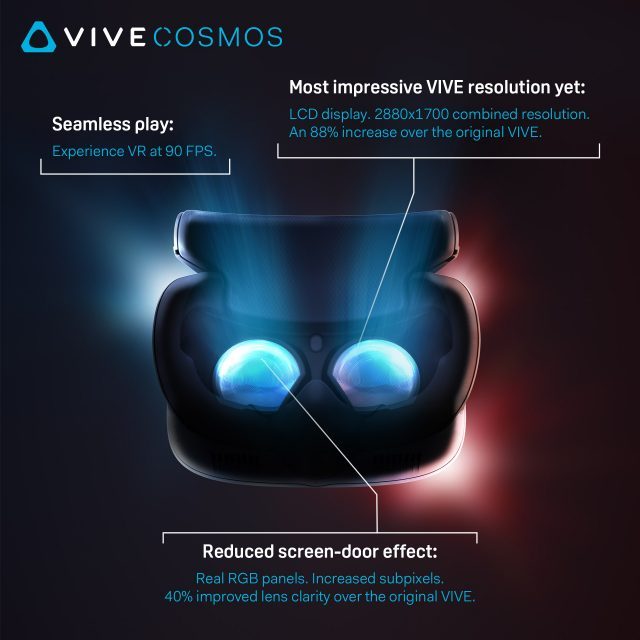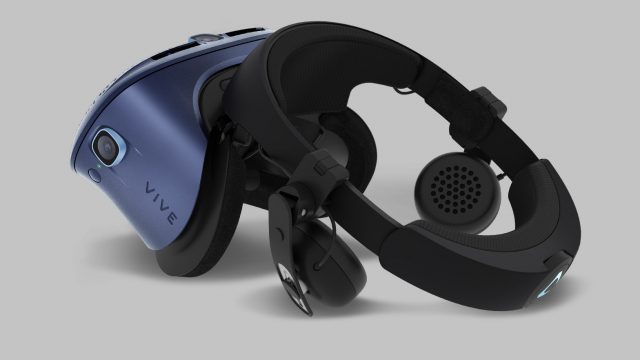HTC is slowly releasing Vive Cosmos details ahead of a launch later this year. Today the company confirmed that the headset will have a 1,440 × 1,700 per-eye resolution, an 88% increase in pixel count over the original Vive.
Though the company revealed the headset way back in January, HTC has been keeping Vive Cosmos details under wraps. That’s slowly changing; in the last few weeks we’ve learned that the headset is due to ship in Q3, will include six cameras for inside-out tracking, and will cost less than $900.
Today HTC confirmed another major missing detail, resolution. The Vive Cosmos resolution is 1,440 × 1,700 per-eye (2,880 × 1,700 total), which is an 88% increase in pixel count over the original Vive at 1,080 × 1,200 per-eye. What’s more, Cosmos will use RGB LCD displays which include red, green, and blue sub-pixels for each pixel, offering a boost to sub-pixel resolution and fill-factor compared to the OLED displays of the original Vive. LCD displays, however, typically don’t perform as well with darker scenes than OLED displays.


HTC has also confirmed that the headset will operate at a 90Hz refresh rate, the same as the original Vive.
The Oculus Rift S—which is likely to be Cosmos’ main competitor—has a resolution of 1,280 × 1,440 per-eye and runs at 80Hz. That leaves Cosmos with 32% more pixels and a 12.5% higher refresh rate. Rift S also lacks a hardware IPD adjustment (the distance between the lenses) while Cosmos has one. Without knowing the price of Cosmos, it’s hard to know how competitive the headsets will ultimately be with one another.
We don’t have confirmation yet if Cosmos is using a single display for both eyes or one display for each eye. The latter is typically an important factor when it comes to a headset’s IPD adjustment mechanism. We’ve reached out to HTC for clarity.
HTC is also saying that the Vive Cosmos has “40% improved lens clarity over the original Vive,” though we’re not sure exactly what they mean by “lens clarity.” Again, we’ve reached out to the company for more info. Photos show that the headset is using Fresnel lenses similar to other Vive headsets.

